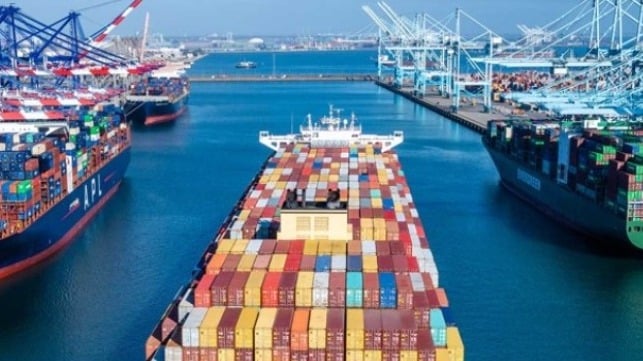Time Containerships Spent Waiting for Berths Doubled in Two Years

Port congestion and the resulting decline in liners’ schedule performance has been a persistent story in 2021 as the global supply chains worked to absorb the surge in trade after the first wave of the pandemic. Southern California’s ports experienced a record number of vessels waiting for terminal space early in the year and the disruptions at the Suez Canal and later China's Yantian port were also causing backlogs.
Market analytics firm IHS Markit analyzed the time containerships are spending waiting for berths reporting that it has more than doubled since 2019. They attributed the increased port delays to surging demand, equipment shortages, and other effects of the pandemic, saying that they believe these issues are persisting as the global trade recovery is becoming more sustained and broader.
According to IHS Markit’s Port Performance Data, North America saw the biggest deterioration with vessels spending on average 33 hours on anchor in May 2021 compared with average of just eight hours in May 2019. While the ports of Long Beach and Los Angeles were the most visible with their delays, the data indicates that containerships were experiencing increased wait times at many of the major seaports.
The data also illustrates that the congestion issues spread across the global supply chain impacting many seaports. For Northern European ports, IHS Markit says the average wait jumped to 30 hours in May 2021 compared to 13 hours in 2019, while at East Asian ports the wait time increased to 15 hours from 10 hours two years earlier.
The congestion and bottlenecks not only slowed ships’ ability to reach the ports but also in many cases extended the time spent in port. Containerships were frequently required to wait in anchorages or slow steam to ports due to a lack of berths. IHS Markit says the average hours containerships spent in port in May 2021 increases to 92 hours for North America and while shorter still required 69 hours on average in Northern European ports and 40 hours on average in East Asia.
“The pandemic and surge in global trade has resulted in a collapse in global vessel schedule integrity,” said Turloch Mooney, Associate Director, Maritime and Trade at IHS Markit. “A much larger percentage of ships are arriving at their destinations well outside of schedule, making it very challenging for ports to plan cargo operations and resulting in vessels having to wait for long periods before they can be loaded or unloaded. Many ports are struggling to maintain an efficient turnaround schedule putting further pressure and delays on an already stretched global supply chain.”
Some ports have been especially hard hit with an increased number of vessels and volume causing congestion and backlogs. IHS Markit highlights that in Los Angles containerships spent an average 215 hours in port in May 2021, of which 89 hours was at anchor. The COVID-19 outbreak in southern China in May similarly resulted in a significant deterioration from 22 to 62 port hours between March to May 2021 at the port of Yantian.
The waiting time is calculated as the average amount of time ships spend at anchor, while port hours includes waiting time, steam-in time, and completion of cargo loading and unloading.
While the situation stabilized at many ports and some such as Los Angeles were able to significantly reduce their backlogs, port officials and carriers believe that this is the beginning of a long-term cycle that will continue to see strong container volumes well into the future.
